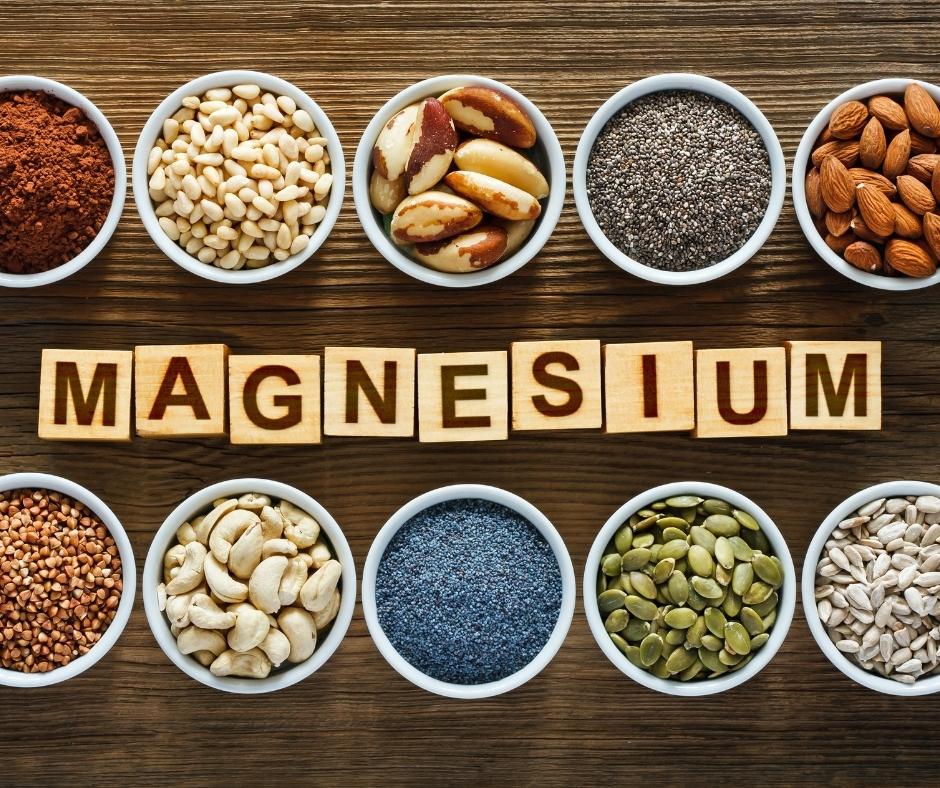Not Every Magnesium is Created Equally
Posted by Nurse Mary on 12th Mar 2025
There are many kinds of Magnesium with various uses from nerves, to muscle health as well as for the brain and clear thoughts. Magnesium is an important mineral to balance your body and feelings of well-being.
Hmmm, Magnesium – kind of an uncomfortable subject because my 1st experience with it in a “therapeutic” dose had me spending too much time in the bathroom. A joking matter now but not too funny then.
As I learned later that was Magnesium Citrate and I have found out since there are a lot of other Magnesium options. My chiropractor calls Magnesium Glycinate the “Happy Magnesium” my natural practitioner calls Magnesium L-Theronate “good for the brain.”
I always thought the mineral Magnesium was just Magnesium, right?! It comes from a mineral in the earth and so on but, well, it isn’t that simple.
To be clear there are many foods that contain Magnesium – here is a short list:

- Legumes: black beans, edamame, kidney beans
- Vegetables: spinach, kale, avocado, potato with skin, okra
- Nuts: almonds, peanuts, cashews, pumpkin seeds, chai seeds
- Whole grains: oatmeal, whole wheat, brown rice, barley
- Others: dark chocolate, soy milk, yogurt, banana
The recommended dietary allowance for adult men is 400-420 mg per day and 310-320 mg for women so if you aren’t consuming any of the above foods on a regular basis, odds are you’re most likely deficient unless you take a Magnesium supplement.
I’ll mention a few of my favorite Magnesium supplements below.
Did you know that epsom salt is actually a form of Magnesium? That is one of the reasons why your chiropractor or massage therapist tells you to go home and soak in a tub of warm water with it after a hard workout. You can actually absorb a therapeutic dose of Magnesium and talk about a good night’s sleep afterward – It’s great!
Magnesium mixes well with Calcium so I like the: Magnesium/Calcium (Citrate/Malate) option. If you are taking Magnesium for leg cramps, especially.
Another favorite that helps your brain and concentration is:
Magnesium L-Theronate. ProtoSorb Magnesium is very easily absorbed by the body without uncomfortable side effects.
One of the statistics that fascinated me is that 80% of Americans are deficient in Magnesium on some level.
It was interesting to learn about foods that interfere with the absorption of Magnesium are:
- Processed foods
- Carbohydrates & sugar intake especially high fructose corn syrup
- Diets too high in hard-to-digest proteins
- Alcohol
- Some medications like diuretics

If you will excuse a little of my techno-babble I’ll try to stick to the basics and unpack some more info about Magnesium for you.
Magnesium Oxide
Is a salt that is not very well absorbed by the body but is often used in products to calm indigestion.
Magnesium Chloride
Is a Magnesium salt that is often used in topical products like lotions, oils, and ointments for muscle soreness.
Magnesium L-threonate
Is the salt formed from mixing Magnesium and threonic acid, a water-soluble substance, derived from the metabolic breakdown of Vitamin C.
Magnesium L-theronate is easily absorbed and may be the most effective type for increasing Magnesium concentrations in brain cells. It is often used for its potential brain benefits and may help manage certain brain disorders, such as depression and age-related memory loss.
Magnesium sulfate
Is formed by combining Magnesium, sulfur, and oxygen. It’s commonly referred to as epsom salt. Magnesium Sulfate is frequently dissolved in bath water to soothe sore, achy muscles and relieve stress. It’s also sometimes included in skincare products, such as lotion or body oil.
Magnesium Glycinate
Is formed from elemental Magnesium and the amino acid glycine.
Your body employs this amino acid in protein construction. It also occurs in many protein-rich foods, such as fish, meat, dairy, and legumes.
Magnesium Glycine is often used as a standalone dietary supplement to improve sleep and treat a variety of inflammatory conditions, including heart disease and diabetes.
Magnesium Glycinate is easily absorbed and may have calming properties. It may help reduce anxiety, depression, stress, and insomnia.
Magnesium Glycinate (magnesium bound with glycine, a non-essential amino acid) is one of the most bioavailable and absorbable forms of magnesium, and also the least likely to induce diarrhea. It is the safest option for correcting a long-term deficiency.
Magnesium Malate
Includes malic acid that occurs naturally in foods like fruit. This acid has a sour taste and is often used as a food additive to enhance flavor or add acidity.
Research suggests that Magnesium Malate is very well absorbed in your digestive tract, making it a great option for replenishing your Magnesium levels.
It is often recommended as a treatment for symptoms associated with fibromyalgia and chronic fatigue syndrome.
Magnesium Taurate
Contains the amino acid taurine. Research suggests that adequate intakes of Taurine and Magnesium play a role in regulating blood sugar. Thus, this particular form may promote healthy blood sugar levels. Magnesium and Taurine also support healthy blood pressure.
Magnesium is present in a variety of foods, including:
- Legumes: black beans, edamame, kidney beans
- Vegetables: spinach, kale, avocado, potato with skin, okra
- Nuts: almonds, peanuts, cashews, pumpkin seeds, chia seeds
- Whole grains: oatmeal, whole wheat, brown rice, barley
- Others: dark chocolate, soy milk, yogurt, banana
However, if you’re unable to get enough Magnesium from your diet, a supplement may be worth considering.
Certain populations may be at a greater risk of deficiency, including older adults and people with type 2 diabetes, digestive disorders, and alcohol dependence.
Resources:



